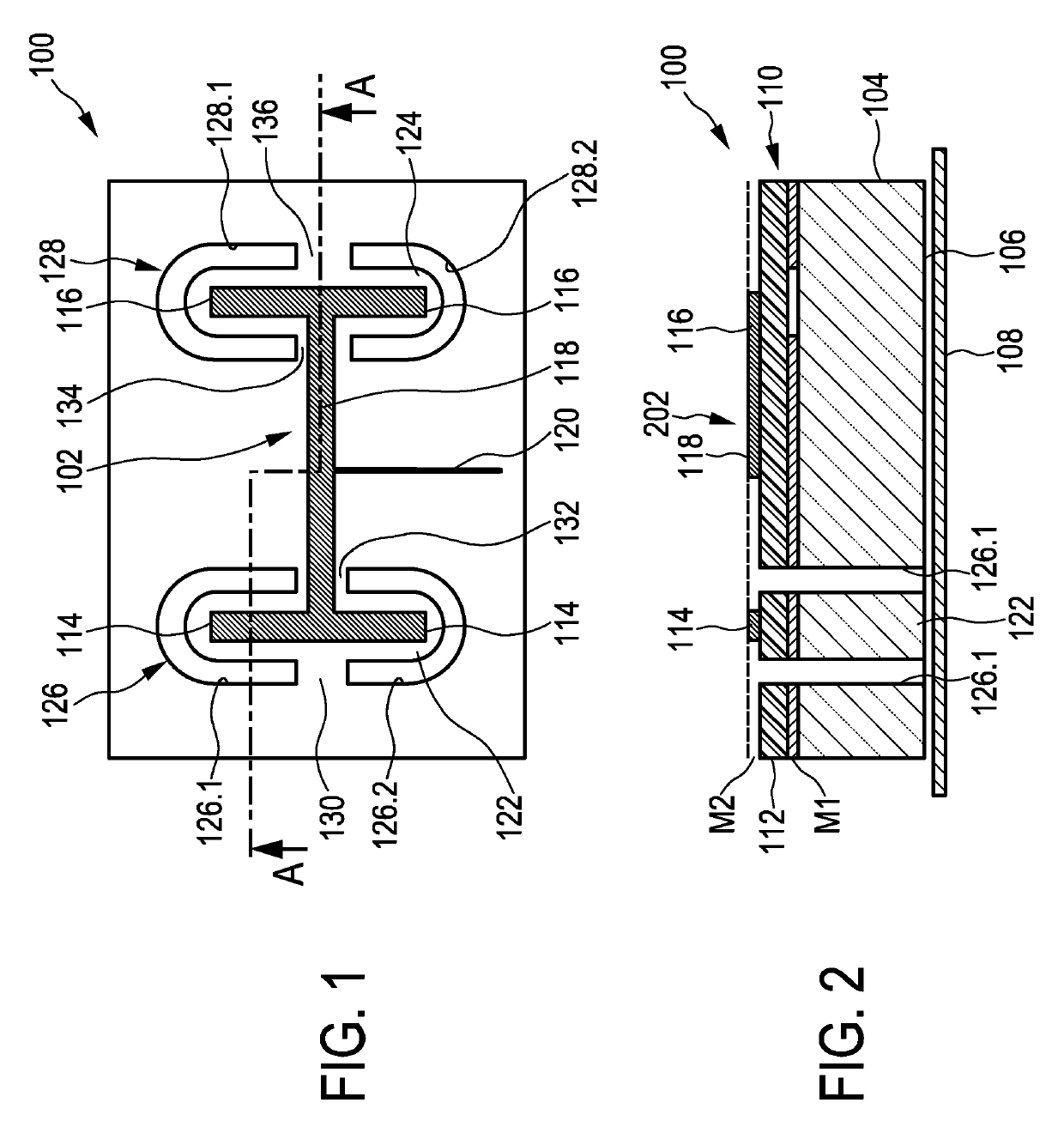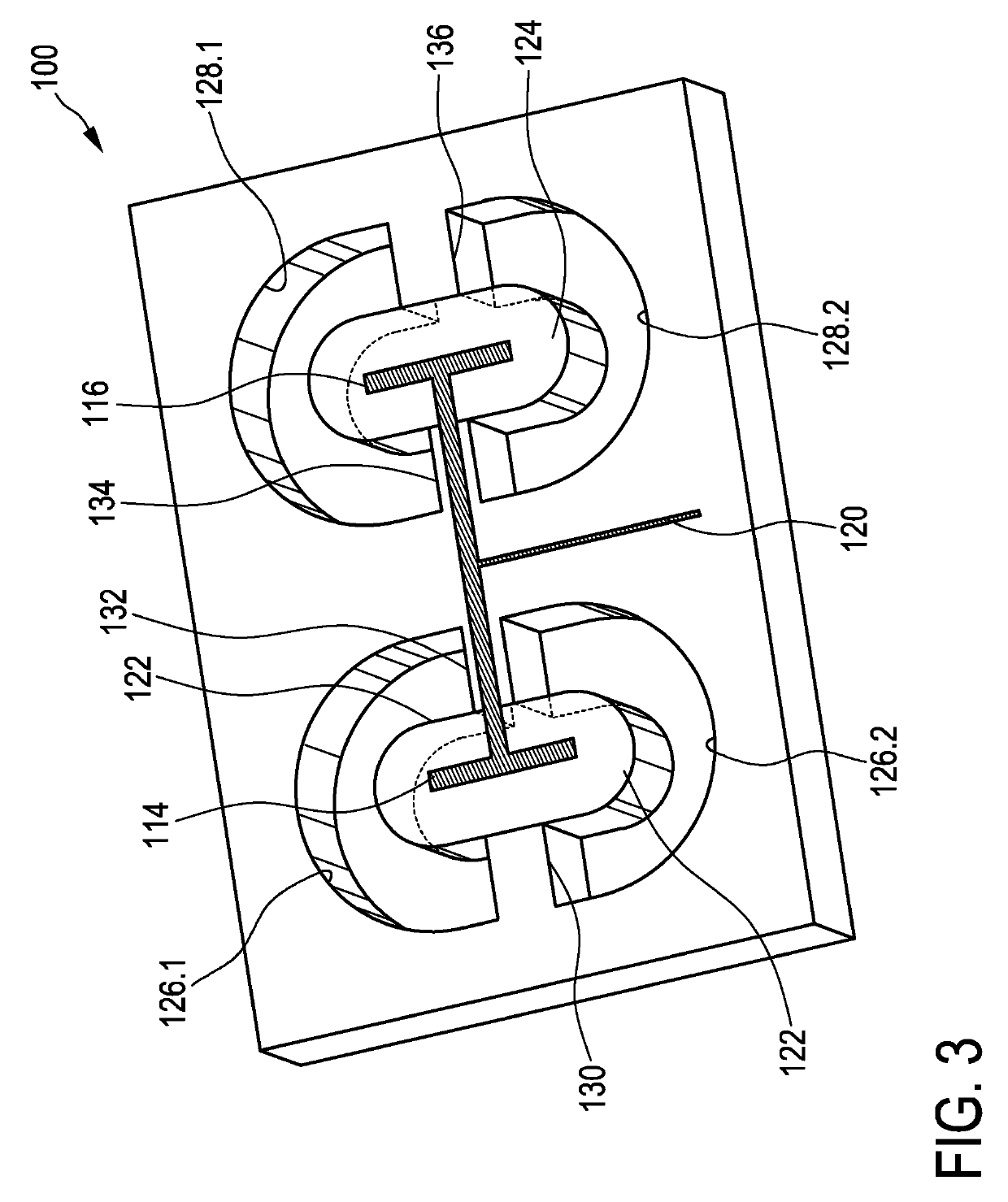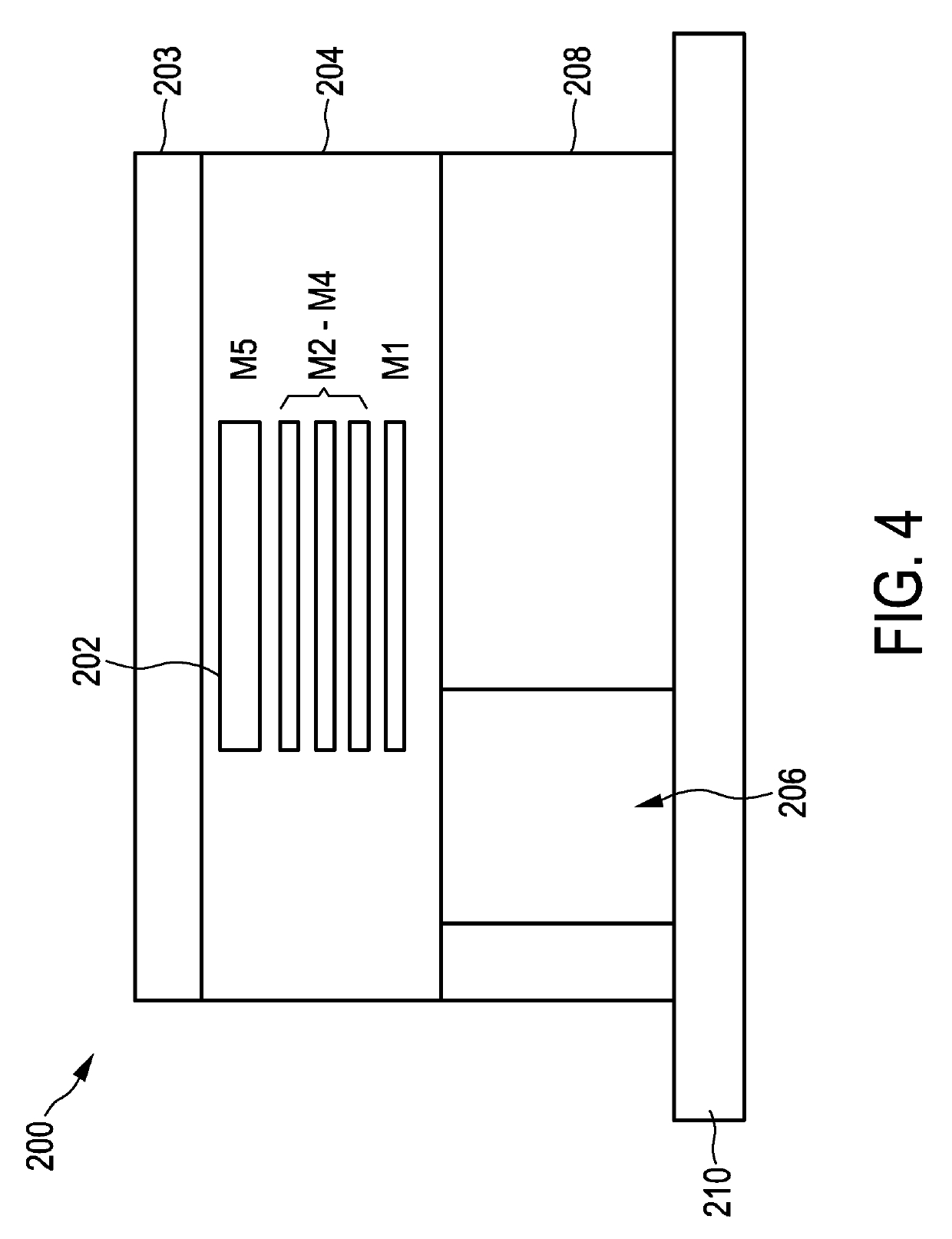Chip antenna, electronic component, and method for producing same
a chip antenna and electronic component technology, applied in the direction of individual energised antenna arrays, radiating element structural forms, basic electric elements, etc., can solve the problems of low electrical impedance of silicon, difficult and cost-intensive electronic packaging technologies, and poor support of antenna structures. , to achieve the effect of optimizing the high-frequency characteristics of chip antennas, high conductivity, and small chip antenna dimensions
- Summary
- Abstract
- Description
- Claims
- Application Information
AI Technical Summary
Benefits of technology
Problems solved by technology
Method used
Image
Examples
Embodiment Construction
[0047]A first embodiment of a chip antenna 102 according to the present invention, integrated in an electronic component in the form of a chip 100, shall now be described with parallel reference to FIGS. 1 to 3. The views shown in FIGS. 1 to 3 are merely schematic. Each Figure shows only a lateral section of chip 100 containing chip antenna 102. Other lateral sections of chip 100, containing monolithically integrated electronic circuits, for example, are not shown in graphical form here for the sake of simplicity. In FIG. 3, some of the details drawn into the two views in FIGS. 1 and 2 have been left out. This is done solely for the purpose of clearer presentation.
[0048]Chip antenna 102 is formed on a semiconductor substrate, which is a silicon wafer 104 here. Silicon wafer 104 is a standard semiconductor substrate use in CMOS or BiCMOS processes.
[0049]Silicon wafer 104 is connected here by its underside 106 to a metallic reflector 108. The reflector can be a grounding surface of a ...
PUM
 Login to View More
Login to View More Abstract
Description
Claims
Application Information
 Login to View More
Login to View More - R&D
- Intellectual Property
- Life Sciences
- Materials
- Tech Scout
- Unparalleled Data Quality
- Higher Quality Content
- 60% Fewer Hallucinations
Browse by: Latest US Patents, China's latest patents, Technical Efficacy Thesaurus, Application Domain, Technology Topic, Popular Technical Reports.
© 2025 PatSnap. All rights reserved.Legal|Privacy policy|Modern Slavery Act Transparency Statement|Sitemap|About US| Contact US: help@patsnap.com



